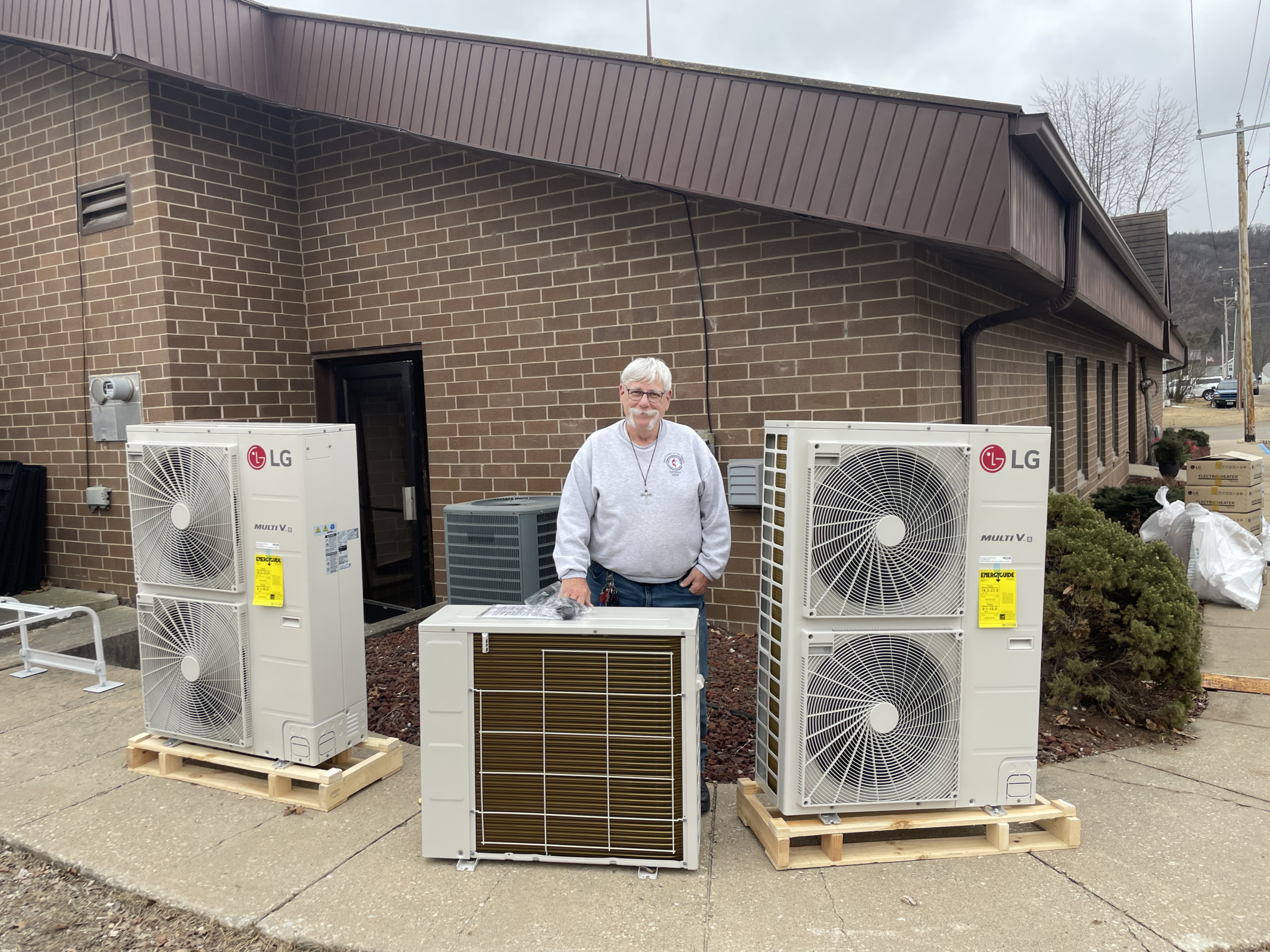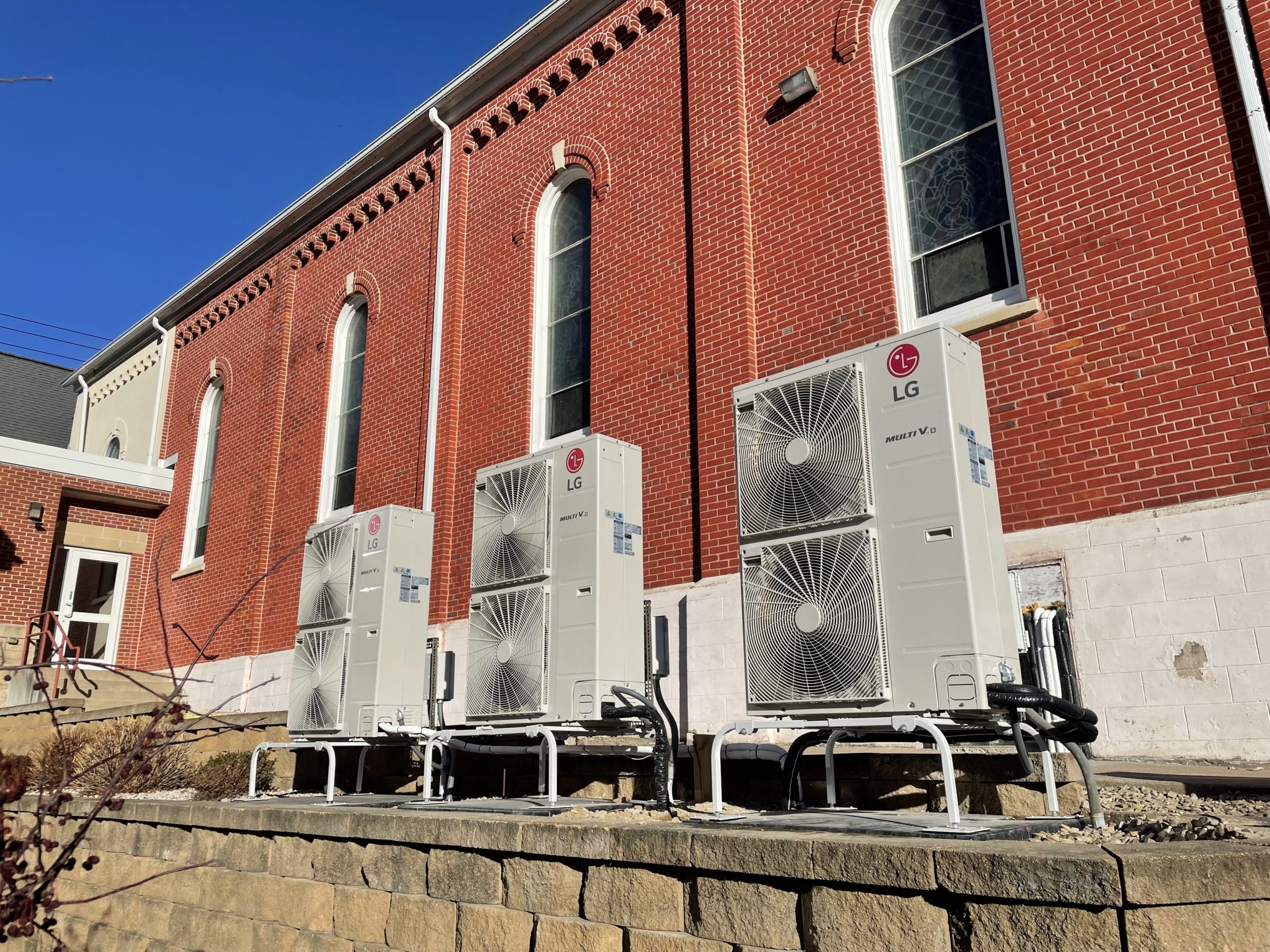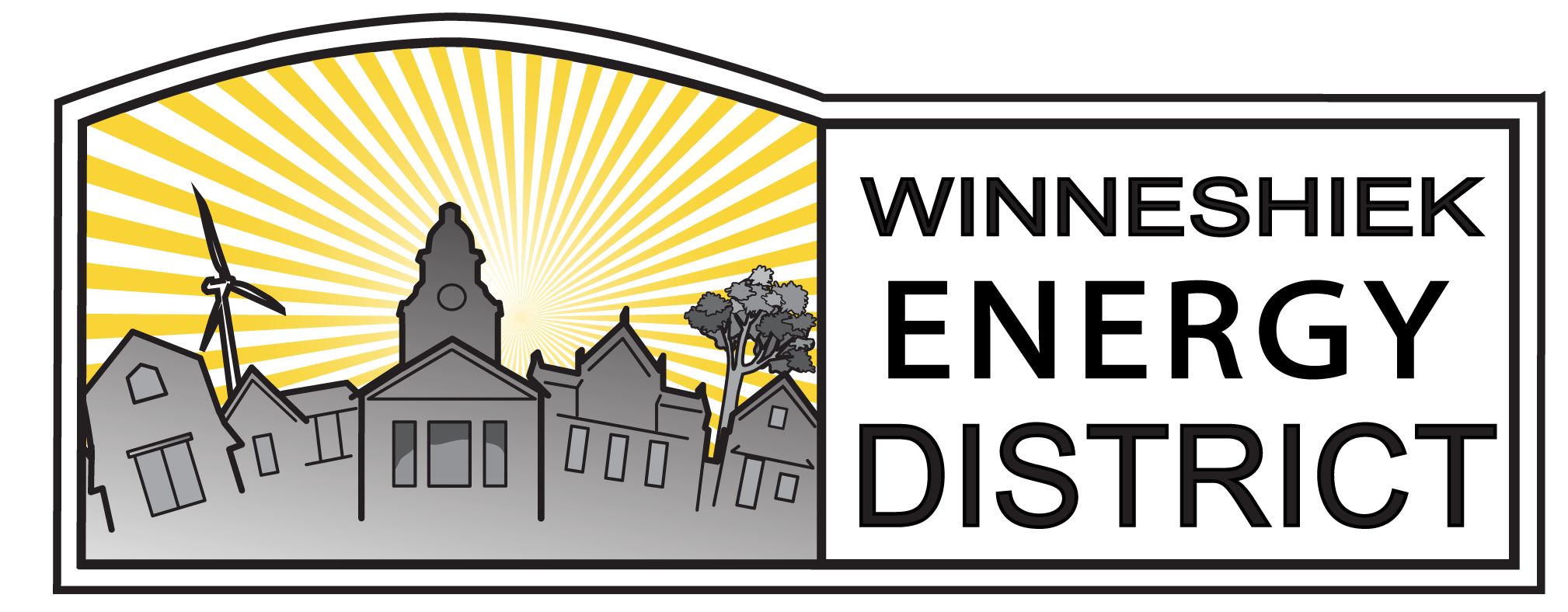Solar and Heat Pumps: How Two Lansing, Iowa Churches Lower Utility Costs, Secure a More Financially Sound Future
Paul Cutting, Energy Planner
Lansing, Iowa
Lansing, Iowa, located along a beautiful stretch of the Mississippi River in Northeast Iowa, is the quintessential Mississippi River town. Sporting a largely intact core of mid 19th century brick and limestone buildings, it has the feel of a different era.
Until 2022, Lansing was home to the Lansing Generating Station, a 338 megawatt coal-fired power plant built in 1948 by Interstate Power Company. In 2002, Interstate Power Company and IES Utilities, Inc. merged to form Interstate Power and Light Company, which does business as Alliant Energy, and remains the local electric provider today.
Alliant Energy announced in October 2020 that its coal-fired Lansing Generating Station would close at the end of 2022. According to a recent study commissioned by the Iowa Environmental Council and conducted by researchers at Iowa State University, the Lansing Generating Station supports 4.04% of industry output in Allamakee County, which is almost ten times higher than the average impact of the other six coal-fired power plants in Iowa. The power plant near Lansing was responsible for $16,403,619 in local economic activity in 2020, supported the equivalent of 81.77 jobs, and provided $6,167,957 in local employee compensation. The relative value of the Lansing Generating Station to the various taxing authorities is high in Allamakee County. For example, nearly half of Lafayette Township’s full budget is funded by Utility Replacement Tax for the township’s fire and emergency medical service levy.
Lansing and Allamakee County face challenges similar to most rural areas–population loss and the accompanying decline of local schools, closure of religious and civic institutions, economic stagnation, and challenges providing child and elder care.
Lansing sits outside of the natural gas distribution grid, and, as a result, local residents pay a disproportionate portion of their income for energy. Local residents heat with expensive electric resistance heat, use costly alternative fuels like wood or propane, and some are lucky enough to escape high electric rates with ultra-efficient heat pumps.
Energy District Involvement with Local Churches
In 2022, the Allamakee Energy District applied to the Just Transition Fund for a two-year planning and capacity building grant. A project of the Rockefeller Philanthropies, the Just Transition Fund seeks to empower local communities affected by the closure of coal mines and coal power plants by helping them expand workforce development, promote economic diversification, and improve infrastructure.
The grant was multi-faceted, and one component allowed the Allamakee Energy District (AED) to work with local non-profits to understand the economic opportunities of energy efficiency and renewable energy projects.
As part of this effort, the Allamakee Energy District’s energy auditor (on loan from Winneshiek Energy District), Paul Cutting, and AED’s community outreach coordinator, Jim Martin-Schramm, worked with about 30 local non-profits to conduct energy efficiency and solar energy assessments. This yearlong effort has resulted in several organizations moving forward with solar and efficiency improvements, including Lansing’s Immaculate Conception Catholic Church and United Methodist Church.
United Methodist Church
United Methodist Church was built in 1982 and is all-electric. The building was heated with five electric furnaces and cooled with five air conditioning condensers, all of which were original to 1982. When the facility was built, it had access to an Interstate Power Company electric heat rate which offered lower electric rates for space heating. The reduced-cost heat rate was discontinued after the merger in 1999, and the church has been paying standard Alliant commercial electric rates since, which this past year averaged 14.5¢ per kilowatt-hour. At that rate, electric resistance heating costs about 4 times that of comparable natural gas units, which, unfortunately, is not an option.
Allamakee Energy District provided United Methodist with an energy assessment outlining opportunities for cost and energy savings, including replacing the electric furnaces with new cold climate ducted heat pumps, switching 200-4’ fluorescent bulbs to LEDs, and the option of 19 kW of rooftop solar. The church opted to move forward with the lighting and heat pump projects and may pursue rooftop solar down the line when the new, lower electrical usage is better quantified. Taken together, the LED lighting and heat pump upgrades are expected to reduce electricity costs by at least 50% and likely much more.
The church opted to replace all five furnaces with LG brand cold climate air source heat pumps at a cost of $63,500. The equipment was installed by local Tri-State Heating of Lansing. The heat pumps are rated to maintain full heating capacity down to 5°F with an efficiency of 225% compared to standard electric resistance, and maintain 85% of capacity at -13°F. It was imperative the heat pumps be able to maintain capacity in nearly all extreme weather situations, as the only source of backup heat is expensive electric resistance. Note: new ducted heat pumps have the option of integrating backup heating elements into indoor air handlers.

Pastor Buck and United Methodists’ new cold climate heat pumps
Pastor Buck and the congregation raised roughly two-thirds of the total project cost and sought out private financing for the remaining third. Taken together, the cost of new, lower utility bills combined with loan payments will not exceed what the church paid for electricity prior to the project.
Immaculate Conception Catholic Church
Immaculate Conception Catholic Church has moved forward with several solar and heat pump projects over the past several years. Taken together, these projects have lowered overall energy costs and helped the church make progress on its environmental stewardship goals.
A few years ago, the congregation installed three LG brand five-ton ducted cold climate heat pumps that serve the original portion of the facility built around 1910. Unlike the all-electric United Methodist, Immaculate Conception is heated with propane. The new heat pumps were installed to run in parallel with the existing hot water propane system, and operate when the outdoor temperatures are above 10°. The congregation also installed ductless heat pumps at the rectory, which also run in conjunction with the existing propane heating system. The new heat pumps reduce operational costs and serve to lower the church’s carbon footprint.

Heat pumps at Immaculate Conception, installed 2023, provide air conditioning and heating along with the existing propane heating system
Allamakee Energy District worked with Fr. Joseph Sevcik and Immaculate Conception to develop a plan to install a large ground mounted solar array on the hillside behind the parking lot along the northern boundary of the property. The array is 42 kW in size, or 80 panels, and offsets about 90% of the electric consumption of both the church and rectory.
The Inflation Reduction Act of 2022 allows for non-taxable organizations (those who don’t have tax liability) to take advantage of tax credits through a mechanism known as elective payment, where the tax credit is given in the form of a cash grant. The credit is worth 30% of total project costs. As a result of this law change, solar makes more financial sense for local non-profit and religious organizations.

Along with the 30% credit, there are also adders for projects that meet certain criteria, like utilization of domestically sourced materials, and projects that sit in geographic proximity to recently closed coal mines and coal power generation facilities. The project qualified for this 10% “adder” due to Alliant’s closure of the power plant near Lansing.
The $110,000 array was installed by Northeast Iowa Mechanical of Elgin, and was made possible through low-interest financing provided by the Archdiocese of Dubuque. Father Joseph Sevcik commented, “As Christians, we strive to be good stewards of our resources. The Vatican has been installing solar systems over the past year. After reviewing our energy audit and solar assessment from Paul and Jim, it was clear to our Pastoral Council that this solar project would be a great benefit in multiple ways. The Archdiocese helped us to make it happen.”
